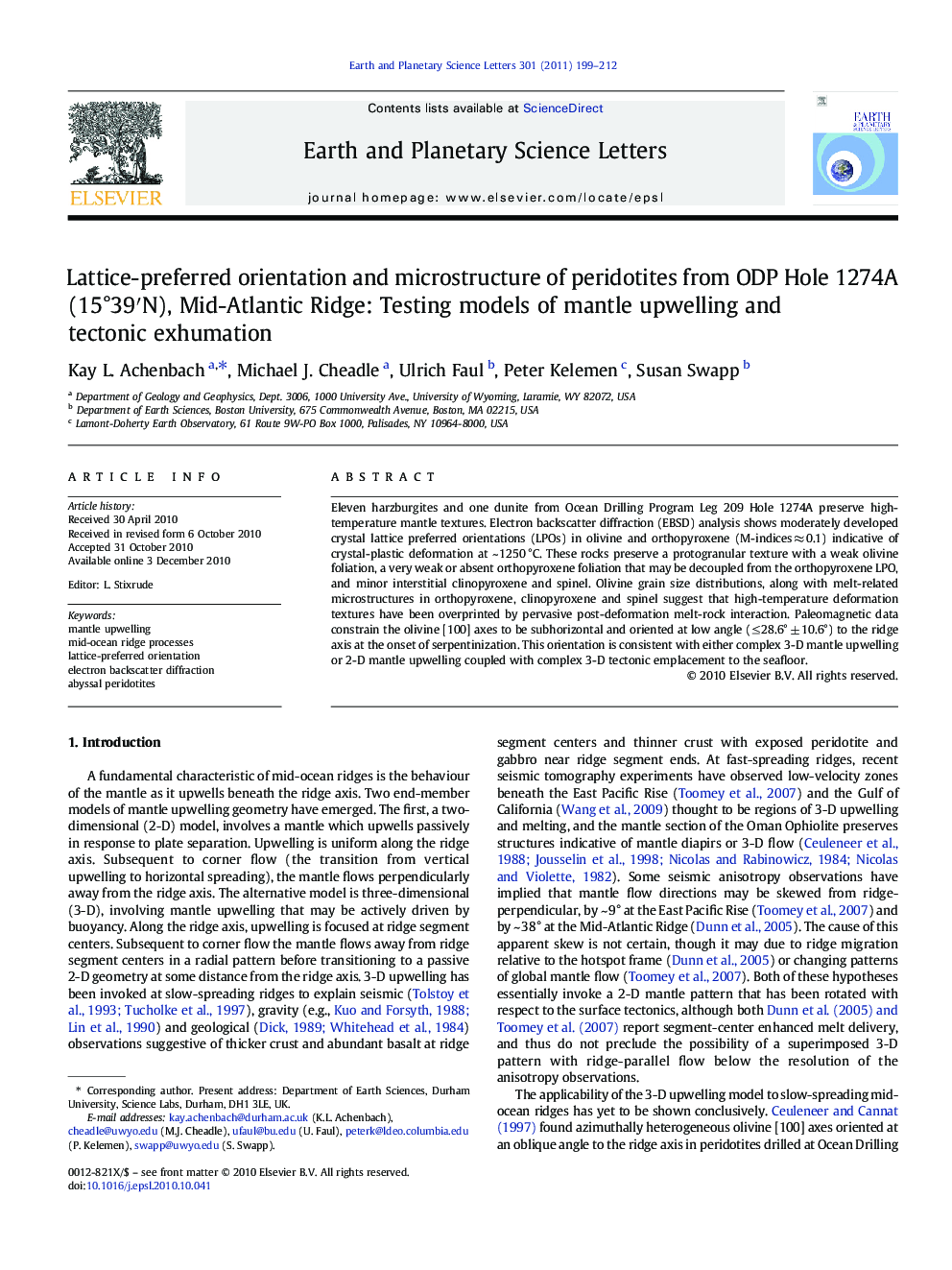| کد مقاله | کد نشریه | سال انتشار | مقاله انگلیسی | نسخه تمام متن |
|---|---|---|---|---|
| 6430859 | 1634838 | 2011 | 14 صفحه PDF | دانلود رایگان |

Eleven harzburgites and one dunite from Ocean Drilling Program Leg 209 Hole 1274A preserve high-temperature mantle textures. Electron backscatter diffraction (EBSD) analysis shows moderately developed crystal lattice preferred orientations (LPOs) in olivine and orthopyroxene (M-indices â 0.1) indicative of crystal-plastic deformation at ~ 1250 °C. These rocks preserve a protogranular texture with a weak olivine foliation, a very weak or absent orthopyroxene foliation that may be decoupled from the orthopyroxene LPO, and minor interstitial clinopyroxene and spinel. Olivine grain size distributions, along with melt-related microstructures in orthopyroxene, clinopyroxene and spinel suggest that high-temperature deformation textures have been overprinted by pervasive post-deformation melt-rock interaction. Paleomagnetic data constrain the olivine [100] axes to be subhorizontal and oriented at low angle (â¤Â 28.6° ± 10.6°) to the ridge axis at the onset of serpentinization. This orientation is consistent with either complex 3-D mantle upwelling or 2-D mantle upwelling coupled with complex 3-D tectonic emplacement to the seafloor.
Research HighlightsâºPeridotites from the Mid-Atlantic Ridge preserve high-temperature fabrics.âºOlivine [100] axes are at low angle to the ridge axis.âºEither mantle flow or tectonic rotations (or both) must be complex and 3D.
Journal: Earth and Planetary Science Letters - Volume 301, Issues 1â2, 3 January 2011, Pages 199-212